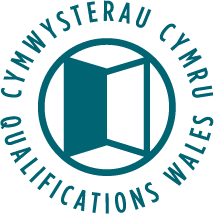Community Food and Nutrition Skills
- Unit ID:
- BSD959
- Unit Code:
- NH22CY001
- Level:
- Two
- Credit Value:
- 3
- Sector:
- 1.2
- LDCS:
- NH2
- GLH:
- 24
- Last registration date:
- 30/09/2030

This unit forms part of one or more qualifications.
Agored Cymru Level 2 Diploma in Facilities Services for Healthcare in Wales
Agored Cymru Level 3 Diploma in Maternity and Paediatric Support in Wales
Agored Cymru Level 3 Diploma in Dietetic Support
Agored Cymru Level 3 Diploma for Multi-Professional Support Workers
Purpose and Aim
This unit will be delivered and assessed by a Registered Dietitian in NHS Wales. It is part of the all Wales NUTRITION SKILLS FOR LIFETM programme developed by Public Health Dietitians in Wales and the Welsh Government to ensure evidence based nutrition messages are disseminated to others.
To enable the learner to understand the role of the balanced diet in maintaining individual and community health; how to improve nutritional intake by amending diets; and how different populations may require different diets to maintain health.
Learning OutcomesThe learner will
|
Assessment CriteriaThe learner can
|
||||||||||
|---|---|---|---|---|---|---|---|---|---|---|---|
|
|
||||||||||
|
|
||||||||||
|
|
||||||||||
|
|
||||||||||
|
|
||||||||||
|
|
||||||||||
|
|
||||||||||
|
|
||||||||||
|
|
Assessment Methods:
Assessment Information:
This training is part of NUTRITION SKILLS FOR LIFETM.
NUTRITION SKILLS FOR LIFETM is a programme of quality assured nutrition skills training and initiatives developed and co-ordinated by dietitians working in the NHS in Wales. The programme aims to support a wide range of community workers, including those from health, social care and third sector organisations to promote healthy eating and incorporate food and nutrition skills into their work. For further information please contact Lisa Williams National Nutrition Training Facilitator on 02920668089 or email Lisa.Williams16@wales.nhs.uk
1.1 A minimum of five food groups.
1.2 A minimum of five foods.
1.3 A minimum of three ways.
2.1 A minimum of three types of fat.
2.2 A minimum of two benefits of reducing each.
2.3 A minimum of two benefits of increasing fibre.
2.4 A minimum of three ways to increase fruit and vegetable intake.
3.2 A minimum of three benefits.
3.3 A minimum of two examples.
4.1 A minimum of five barriers.
4.2 A minimum of two examples.
4.3 A minimum of three examples.
5.1 A minimum of three reasons
5.2 A minimum of three changes.
5.3 A minimum of three SMART goals.
6.2 A minimum of three different foods.
6.3 A minimum of two examples.
Population Groups could include:
- Infants
- Pre-school children
- School aged children
- Women before and during pregnancy
- Older adults
7.2 A minimum of two population groups
8.2 Plan a menu for a week.
9.1 A minimum of two examples.
If not specifically stated in the assessment information, a plural statement in any assessment criterion means a minimum of two.
ESDGC:
The following key themes can be integrated into this unit

Health

Wealth & Poverty

Choices & Decisions
Other Mappings:
KSF: HWB1 level 1.
Assessor Requirements:
This unit must be delivered and assessed by a Registered Dietitian working in NHS Wales.
Standardised learning and teaching resources are available from Public Health Dietitians in Wales.